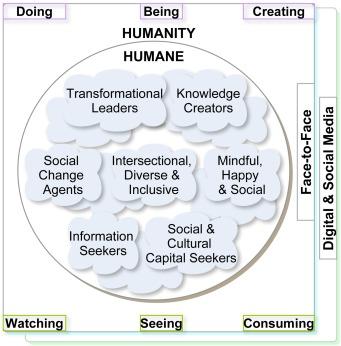What Does a Learning Strategist Do? Key Responsibilities, skills, and Career Paths Explained
Introduction: The Evolving Role of Learning Strategists in Education Technology
The digital revolution is reshaping education, driving the demand for skilled professionals who can bridge the gap between pedagogy and technology. If you’re considering a rewarding career in education technology at universities, colleges, or schools, the role of a Learning Strategist might be your perfect fit. But what exactly does a learning strategist do, and how can you chart a accomplished career in this dynamic field? This thorough guide explores the key responsibilities, required skills, career paths, and benefits of becoming a learning strategist in today’s academic and edtech environments.
What is a Learning Strategist?
A Learning Strategist is an educational professional who designs, implements, and evaluates learning strategies that enhance student engagement, retention, and success. Learning strategists work closely with faculty, instructional designers, and administrators to integrate effective teaching methodologies and innovative technologies into the curriculum. Whether at a university, college, or school, this role is essential in ensuring that learning experiences are accessible, inclusive, and driven by data-informed best practices.
Key Responsibilities of a Learning Strategist
The specific duties of a learning strategist can vary depending on the institution, but generally include:
- Curriculum Design and Growth: Collaborating with subject matter experts to develop engaging, accessible, and relevant course materials aligned with learning objectives and accreditation standards.
- Instructional Technology Integration: Selecting, implementing, and managing educational technology tools (such as Learning Management Systems, adaptive learning platforms, and digital content) to support teaching and learning.
- Faculty Training and Support: Providing Workshops,one-on-one coaching,and resources to help instructors adopt innovative teaching strategies and technology.
- Student learning Support: Assessing student learning needs and developing personalized learning plans, study skills workshops, and academic support programs.
- Evaluation and Assessment: Analyzing student data, collecting feedback, and using assessment tools to measure the effectiveness of instructional interventions.
- Accessibility and Inclusion: Ensuring that all course content and learning activities comply with accessibility standards and promote equity for diverse student populations.
- Stakeholder Collaboration: Working with faculty, IT teams, governance, and students to identify and solve educational challenges.
Essential Skills for Learning Strategists
To thrive in a learning strategist role within education technology,you’ll need a mix of technical and interpersonal skills. Top employers look for candidates with:
- Instructional Design Expertise: Strong understanding of curriculum development, Universal Design for Learning (UDL), and backward design.
- EdTech Proficiency: Experience with digital learning platforms,educational apps,virtual classrooms,and data analytics tools.
- Assessment and Evaluation: Ability to design formative and summative assessments that provide actionable feedback.
- Interaction Skills: Capacity to translate technical concepts for non-technical audiences and collaborate effectively with colleagues.
- Project Management: proven skills in managing multiple projects, meeting deadlines, and coordinating cross-functional teams.
- data-Driven Decision-Making: Comfort in using student data and research to guide learning improvements.
- Problem-Solving and Adaptability: Resilience and creativity in addressing diverse learning challenges and adapting to technological changes.
- Cultural Competence: Gratitude for diversity and a commitment to inclusive educational practices.
Career Paths for Learning Strategists in Education Technology
The career path for learning strategists is both flexible and promising. Here are some common trajectories in higher education and K-12 institutions:
- Entry-Level Positions: Academic support specialist,instructional technology assistant,or curriculum coordinator.
- Mid-level Roles: Learning strategist, instructional designer, educational technology specialist, or teaching coach.
- Senior and Leadership Roles: Director of Teaching and Learning, Chief Learning Officer, or Educational Technology Manager.
- Specialized Positions: Accessibility consultant, e-learning project manager, or assessment coordinator.
Manny learning strategists also branch into consulting, policy development, or education research, leveraging their expertise to influence the future of teaching and learning on a broader scale.
Benefits of Becoming a Learning Strategist
- Impactful Work: make a real difference in student success, faculty development, and institutional innovation.
- Job Security and Growth: The increasing demand for skilled education technology professionals makes this field both stable and future-oriented.
- Continuous Learning: Stay at the forefront of pedagogical research and technology integration.
- Collaborative Environment: Engage with educators, administrators, and tech experts from diverse backgrounds.
- Competitive Salaries: Education technology roles, especially those involving strategy and leadership, often command attractive compensation packages.
- Flexibility: Many institutions offer hybrid or remote work options, as well as opportunities for professional growth and specialization.
Practical Tips for Landing a Learning Strategist Job
- Build Relevant Experience: Gain hands-on experience through volunteering, internships, or part-time roles in instructional support, teaching, or curriculum design.
- Pursue Advanced Education: Consider earning a master’s degree or professional certification in instructional design, education technology, or a related field.
- Develop a Digital Portfolio: Showcase your curriculum projects, technology integrations, and training materials to demonstrate your impact and creativity.
- Network strategically: Join professional organizations, attend education technology conferences, and participate in online forums to connect with industry leaders.
- Stay Updated: Regularly read blogs, research articles, and news about emerging edtech trends and best practices.
- Highlight Transferable Skills: Even if you’re transitioning from teaching or another field, emphasize skills like communication, project management, and problem-solving on your resume.
Conclusion: Shaping the Future of Learning
as educational institutions increasingly rely on technology to enhance student outcomes, the role of a learning strategist has never been more crucial. Whether you’re passionate about improving curriculum, driving faculty development, or leveraging the latest digital tools, a career as a learning strategist offers the possibility to innovate and make a lasting impact in education.
By understanding the key responsibilities, must-have skills, and diverse career paths outlined above, you’re already one step closer to launching a successful journey in the thriving world of education technology. Embark on this rewarding path, and help shape the educational experiences of tomorrow.

